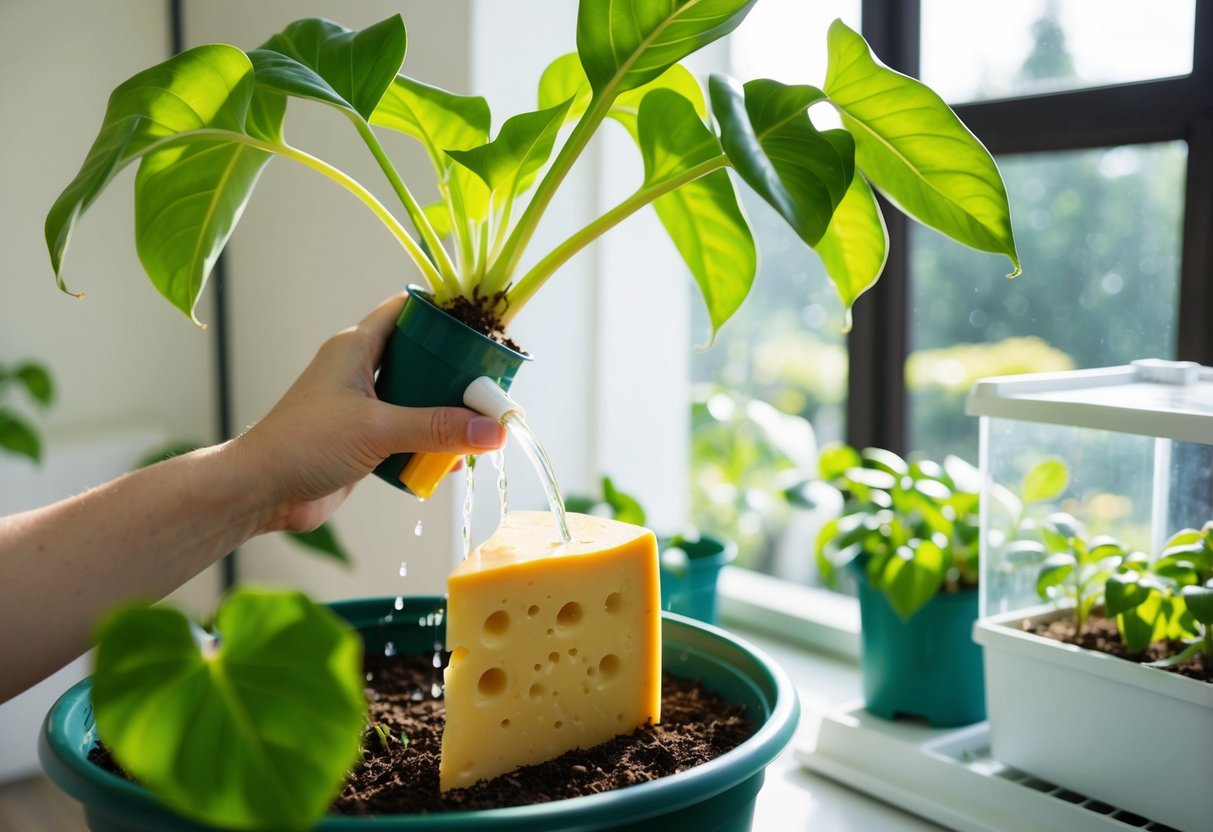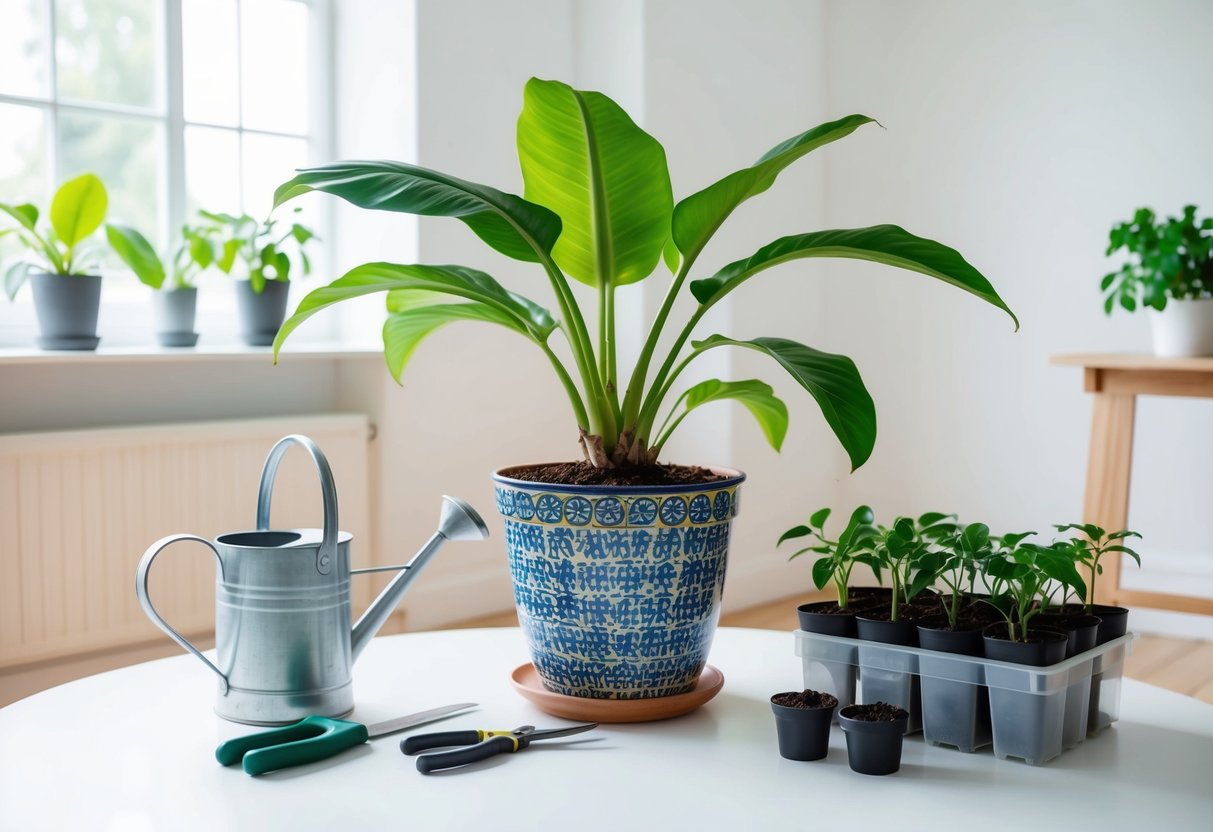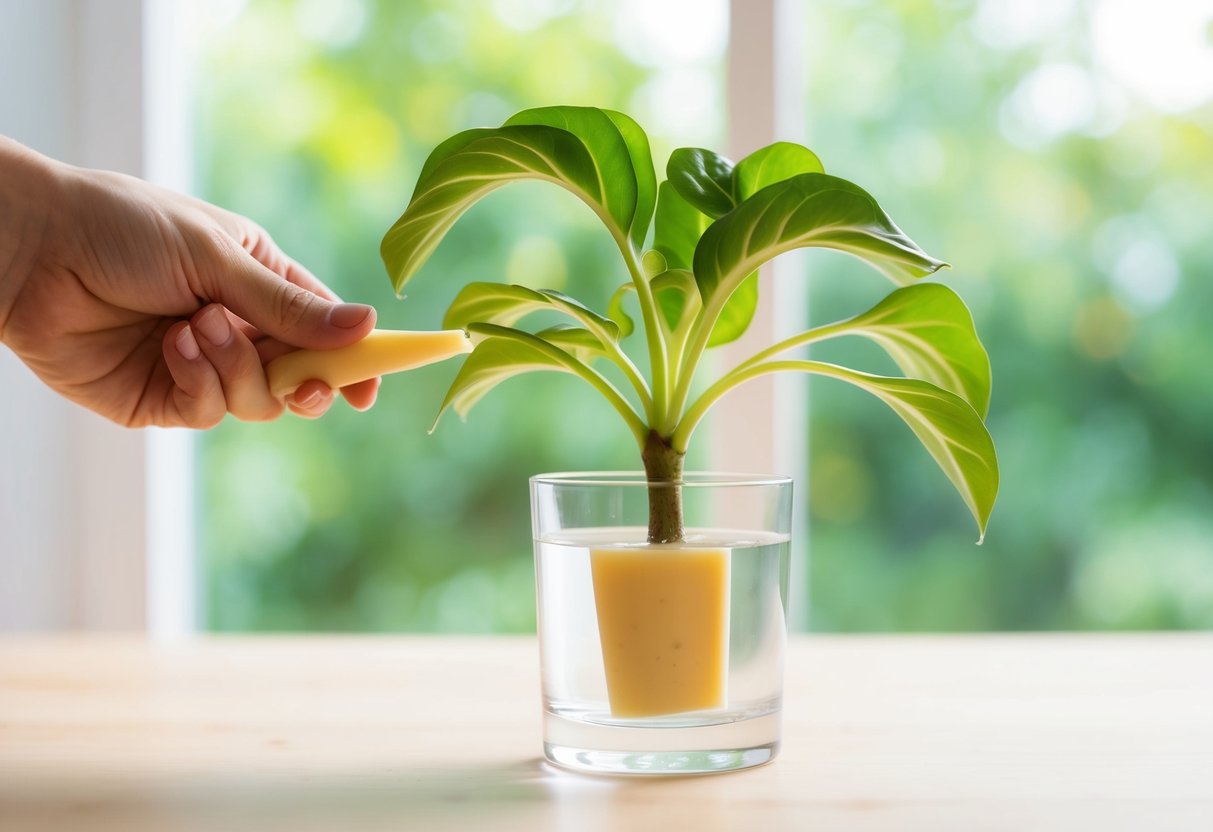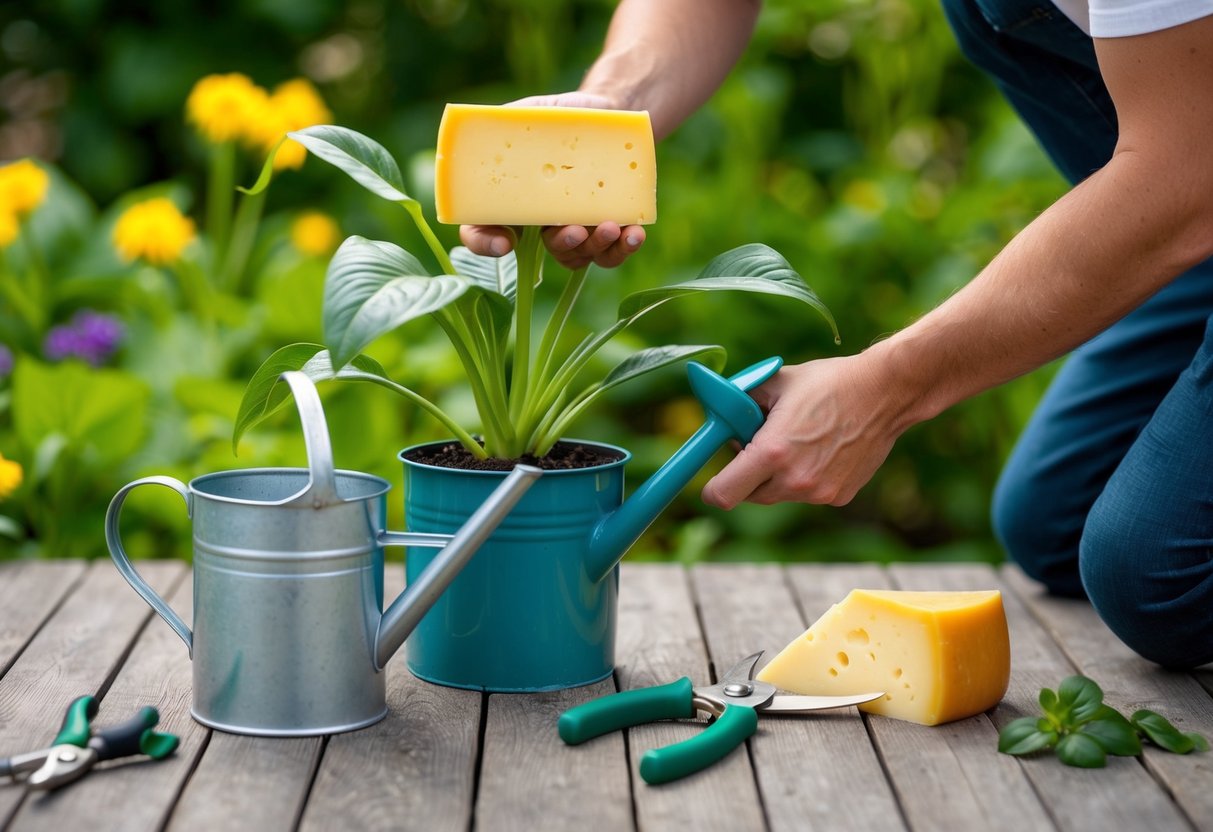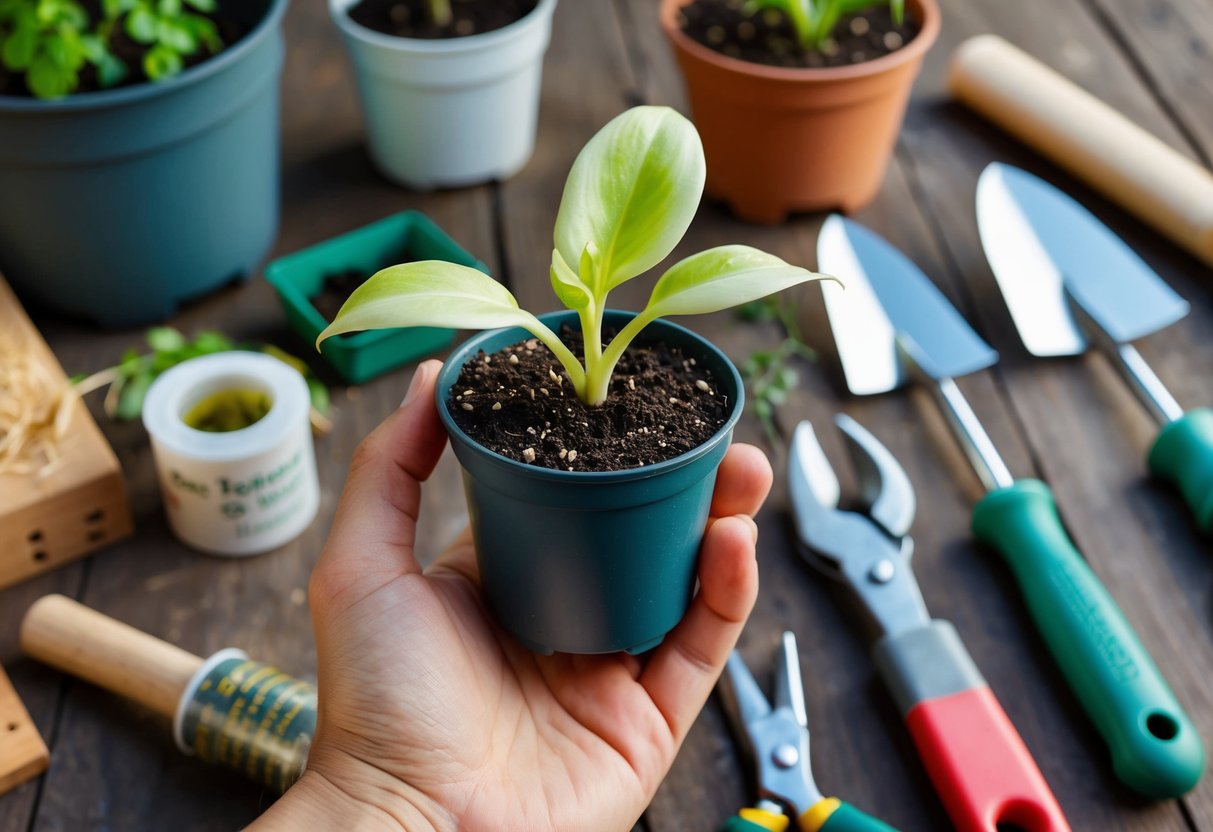HousePlantJoy is supported by our audience. When you purchase through one of our links, we may earn a small affiliate commission. As an Amazon Associate I earn from qualifying purchases. Your cost is not affected.
==================
Swiss cheese plant care and propagation is a breeze, even for a beginner gardener like me. These tropical beauties are not only stunning but also surprisingly resilient. I’ve learned a lot about caring for them over the years, and I’m excited to share my tips with you. In this article, you’ll discover everything you need to know about keeping your Swiss cheese plant healthy and happy, from lighting and watering to propagation and troubleshooting common issues. Let’s dive in!
Swiss Cheese Plant Care and Propagation: Easy Tips for Thriving Monsteras
The Swiss cheese plant, also known as Monstera, is a popular houseplant loved for its unique leaf patterns and easy care. These tropical beauties can grow quite large, reaching up to 10 to 13 feet tall when grown outdoors. Indoor plants tend to stay smaller, usually between 3 and 8 feet.
Swiss cheese plants thrive in warm, humid environments with temperatures between 60°F and 85°F. They like bright, indirect light and well-draining soil. Watering should be done when the top inch of soil feels dry. These plants are easy to care for and can add a tropical vibe to any room.
Propagating Swiss cheese plants is simple and fun. You can grow new plants from stem cuttings placed in water, soil, or moss. This is a great way to expand your plant collection or share with friends. With proper care, your Swiss cheese plant will grow into a lush, eye-catching addition to your home.
Monstera Deliciosa Characteristics
Monstera deliciosa is a popular houseplant. It has big, heart-shaped leaves with holes called fenestrations. These holes get bigger as the plant grows.
You’ll notice the leaves can reach up to 3 feet long. The plant can grow 10 to 13 feet tall outdoors, but stays smaller inside.
Monstera deliciosa is a tropical perennial. It likes warm, humid spots in your home. Be careful though – it’s toxic to pets if eaten.
Monstera Adansonii and Other Species
Monstera adansonii is smaller than deliciosa. It’s often called the Swiss cheese plant because of its holey leaves. You’ll see it grows as a vine and can reach 3 to 8 feet tall indoors.
Other Monstera types include:
- Monstera obliqua: Very rare, with more holes than leaf
- Monstera dubia: Small leaves that grow flat against surfaces
- Monstera peru: Thick, leathery leaves without holes
These plants all like similar care. They need bright, indirect light and regular watering. You’ll love how they add a tropical touch to your home.
Optimal Lighting Conditions
Your Swiss cheese plant loves bright, indirect light. Place it near a window with filtered sunlight. East-facing windows work great. Avoid direct sun, which can burn the leaves. If the leaves look pale or the holes aren’t forming, it might need more light. Move it closer to a window or use a grow light. Too much shade leads to slow growth and small leaves.
In winter, when light is less intense, you can put your plant in a brighter spot. Just keep an eye out for any leaf scorching. If you notice brown spots, move it back a bit.
Watering Your Monstera
Swiss cheese plants like their soil moist but not soggy. Water when the top inch of soil feels dry. In spring and summer, this might be once a week. In fall and winter, cut back to every 2-3 weeks.
Use room temperature water and pour slowly until it runs out the drainage holes. Empty the saucer after 15 minutes. Don’t let your plant sit in water.
Signs of overwatering:
- Yellow leaves
- Soft, mushy stems
- Mold on soil
Signs of underwatering:
Temperature and Humidity Needs
Swiss cheese plants thrive in warm, humid conditions. Keep temps between 65-80°F (18-27°C). Avoid cold drafts and sudden temperature changes.
These plants love humidity. Aim for 50-60% humidity if possible. Here are some ways to boost humidity:
- Group plants together
- Use a pebble tray with water
- Run a humidifier nearby
- Mist leaves (but not too often to avoid fungal issues)
In dry indoor air, your plant might get brown leaf tips. This is normal and won’t harm the plant. Just trim off the brown bits.
Soil and Repotting 101
Swiss cheese plants need well-draining soil. Mix regular potting soil with perlite or orchid bark for better drainage. This prevents root rot and helps air reach the roots.
Repot your plant every 2-3 years or when roots start coming out of the drainage holes. Choose a pot 1-2 inches larger with good drainage. Spring is the best time to repot.
Steps for repotting:
- Water the plant a day before
- Gently remove from old pot
- Shake off excess soil
- Place in new pot with fresh soil
- Water thoroughly
After repotting, put the plant in a shady spot for a week to recover.
Pruning for Plant Health
Pruning helps keep your Swiss cheese plant healthy and shapely. Cut off yellow or brown leaves at the base of the stem. This lets the plant focus energy on new growth.
If your plant gets too tall or leggy, you can trim it back. Cut just above a leaf node (where a leaf attaches to the stem). New growth will sprout from this point.
You can use pruned stems to propagate new plants. Place cuttings in water or moist soil to root.
Prune in spring or early summer for best results. Use clean, sharp scissors to avoid spreading disease.
Stem Cuttings and the Rooting Process
To propagate your swiss cheese plant using stem cuttings, start by selecting a healthy stem with at least one leaf node. Cut just below the node using clean, sharp scissors. Remove any lower leaves, leaving 1-2 at the top.
Dip the cut end in rooting hormone to encourage root growth. Plant the cutting in a well-draining potting mix. Keep the soil moist but not soggy. Place the pot in bright, indirect light.
In 2-3 weeks, you should see new roots forming. Gently tug on the cutting – if you feel resistance, roots have developed. Be patient, as it may take up to 8 weeks for a strong root system to establish.
Water Propagation Method
Water propagation is a fun way to watch roots develop. Take a stem cutting with a leaf node, as described above. Place the cutting in a clear glass or jar filled with room temperature water.
Change the water every few days to keep it fresh. Position the container in bright, indirect light. You’ll soon see tiny white roots emerging from the node.
Once roots are 2-3 inches long, it’s time to transfer to soil. Be gentle when planting to avoid damaging the delicate new roots. Keep the soil consistently moist for the first few weeks as the plant adjusts.
Using Sphagnum Moss and Air Layering
Air layering is great for propagating larger monstera plants. Find a node with an aerial root. Make a small incision below the node. Wrap damp sphagnum moss around the cut area and node.
Cover the moss with plastic wrap, securing it above and below. Keep the moss moist. After 3-4 weeks, you should see roots growing into the moss.
Once roots are well-developed, cut below the new root ball. Plant your new monstera in a pot with fresh soil. This method gives you a larger new plant right from the start.
Potting After Propagation
When your cuttings have strong roots, it’s time to pot them up. Choose a container with drainage holes. Use a well-draining potting mix – add some perlite or orchid bark to improve aeration.
Plant your rooted cutting at the same depth it was growing before. Gently press the soil around the stem for support. Water thoroughly and place in bright, indirect light.
For the first few weeks, keep the soil consistently moist. Gradually reduce watering as the plant establishes. Your new swiss cheese plant will soon start putting out fresh leaves and growing into a lush, beautiful houseplant.
Troubleshooting Common Issues
Swiss cheese plants can face several challenges. Keep an eye out for signs of trouble and take quick action to keep your plant healthy. Here are some common issues and how to handle them.
Recognizing and Treating Diseases
Powdery mildew is a common problem for Swiss cheese plants. It looks like a white powder on the leaves. To treat it, wipe the leaves with a damp cloth. You can also use a mix of water and baking soda to spray on affected areas.
Root rot is another issue to watch for. If your plant’s leaves turn yellow and the soil smells bad, you might have root rot. Remove the plant from its pot and cut away any mushy, dark roots. Repot in fresh, well-draining soil.
Leaf spot diseases can cause brown or black spots on leaves. Remove affected leaves and avoid getting water on the foliage when watering.
Managing Pests in Your Monstera
Spider mites and mealybugs are common pests for Swiss cheese plants. Spider mites are tiny and hard to see, but they leave small webs on leaves. Mealybugs look like little cotton balls on stems and leaves.
To get rid of these pests, wipe leaves with soapy water. You can also use neem oil spray. Apply it every few days until the pests are gone.
Fungus gnats can be a nuisance too. They live in moist soil. Let the top inch of soil dry out between waterings to discourage them. You can also use sticky traps to catch adult gnats.
Resolving Growth Problems
If your plant’s leaves aren’t splitting, it might not be getting enough light. Move it to a brighter spot, but avoid direct sunlight which can burn the leaves.
Yellowing leaves can mean your plant is getting too much water. Check the soil before watering. If it’s still damp, wait a day or two.
Slow growth might mean your plant needs more nutrients. Feed it with a balanced liquid fertilizer every month during spring and summer.
If your plant isn’t producing new leaves, check the leaf nodes. These are the spots on the stem where new growth comes from. Make sure they’re not damaged or buried in soil.
Staking and Support for Vertical Growth
As your Swiss cheese plant grows, it needs support to climb. You can use a moss pole or trellis to help it grow upwards. Attach the stems gently to the support with soft plant ties.
Keep an eye on your plant’s growth. You may need to adjust the ties as it gets bigger. This support helps your plant grow in a more natural, upright position.
For larger plants, consider using multiple poles or a wider trellis. This gives your Swiss cheese plant room to spread out as it climbs.
Fertilizing for Nutrient Balance
Your Swiss cheese plant needs food to grow well. Use a balanced houseplant fertilizer every month during spring and summer. In fall and winter, you can cut back to feeding every 6-8 weeks.
Look for a fertilizer with equal parts nitrogen, phosphorus, and potassium. This balanced mix supports overall plant health.
Don’t overdo it with fertilizer. Too much can harm your plant. If you’re unsure, it’s better to use less than the recommended amount.
Maintaining Humidity and Moisture
Swiss cheese plants love high humidity. You can boost humidity by misting the leaves or using a pebble tray filled with water.
Keep the soil moist but not soggy. Water when the top inch of soil feels dry. Use room temperature water to avoid shocking the roots.
In winter, your plant needs less water. Let the soil dry out a bit more between waterings. But don’t let it get bone dry, as this can stress your plant.
Adding peat or compost to your soil mix can help retain moisture. This keeps your plant happy between waterings.
By providing the right light, water, humidity, and soil, you’ll be well on your way to growing a healthy and vibrant Swiss cheese plant. Don’t be afraid to experiment and find what works best for your plant.
How do I care for a Swiss cheese plant?
Feed your plant monthly with a balanced fertilizer during spring and summer. Wipe the leaves with a damp cloth to keep them clean and shiny.
What's the best way to propagate a Swiss cheese plant in water?
Change the water weekly. Place the jar in bright, indirect light. Roots should grow in 2-3 weeks. Once roots are a few inches long, you can plant the cutting in soil.
How often should I water my Swiss cheese plant?
Water less in winter when growth slows down. Increase watering in spring and summer as the plant grows more actively.
What's the proper technique for cutting a Swiss cheese plant for propagation?
Remove any leaves from the lower part of the cutting. Leave 1-2 leaves at the top. Make sure your cutting is 4-6 inches long for best results.
Is it possible to propagate Swiss cheese plant in soil, and if so, how?
Keep the soil moist but not soggy. Place a clear plastic bag over the pot to create a mini greenhouse. Put it in bright, indirect light. Roots should form in 4-6 weeks.
Can Swiss cheese plants thrive outdoors, and under what conditions?
Make sure the soil drains well. Water regularly and mist the leaves to keep humidity high. Bring the plant indoors if temperatures drop below 50°F.
Level Up Your Plant Parenthood!
Craving gorgeous greenery and a supportive plant community? Join the Houseplant Joy fam across social media!
We’ve got engaging content, honest product reviews, and a passion for all things houseplants.
Connect with us on:
- Facebook: Houseplant Joy Blog
- Instagram: @houseplantjoy20
- Pinterest: Houseplant Joy
- Twitter: @HouseplantJoy
- YouTube: Houseplant Joy
- TikTok: @houseplantjoy


